
Honeywell
OWNER’S GUIDE
F50F
ELECTRONIC
AIR CLEANER
Copyright © 1998 Honeywell Inc.
All Rights Reserved
69-0756B-2

69-0756B—2

CONTENTS
PAGE
AIR CLEANER MONITOR 2
OPER ATING YO U R ELECTRO NIC AIR CLEANER 3
GETTING THE MOST FROM YO UR ELECTRO NIC AIR CLEANER 5
CLEANING THE ELECTRONIC CELL(S) AND PREFILTER(S) 7
HO W ELECTRONIC AIR C LEANING W ORKS 13
BEFORE YOU CALL FOR SERVIC E 18
TEN -YEAR CLEAN CO IL G UARAN TEE 20
PERFECT CLIMATE® CONTRO LS 22
LIM ITED FIVE-YEAR W AR RAN TY 23
1
69-0756B—2

AIR C LE ANER MONITOR
The optional W 8600F Air Cleaner
M onitor m ay be added to your air
cleaner system to provide convenient
indication of system perform ance. The
W 8600F must be ordered seperately.
The W 8600F is designed to m ount next
to your therm ostat, or in any convenient
location (such as a utility room) where it
can be seen as it monitors the air
cleaner's perform ance.
The four Liquid Crystal Display (LCD)
indicators are labeled ON, BATTERY,
SER VIC E and FAULT.
• The ON indicator is active during
norm al air cleaning operation. The system fan is also on when the air
cleaner is running.
• The BATTERY indicator is active when the W 8600F battery is low.
• The SERVICE indicator is active when it is tim e to wash the air
cleaner prefilter(s) and cell(s). The tim e between cleanings is entered
into the W 8600F at installation. To turn the SERVICE indicator off,
press the Reset button located at the bottom right of the W8600F.
• The FAULT indicator is active w hen there is extrem e dirt loading,
electronic m alfunction, constant arcing or other problem s with the
high voltage output of the air cleaner power supply.
69-0756B—2 2

OPERATING YOUR ELECTRONIC AIR CLEANER
M11980
Set the O N-O FF switch in the power box to ON.
NOTE: Depress 1 for ON, 0 for OFF.
The air cleaner will now operate whenever your
furnace/air conditioning system fan operates. For
m axim um air cleaning benefit and cleaner air
conditioner coils, leave the air cleaner switch ON
at all tim es and the fan switch on your therm ostat
ON. Of course, continuous fan operation will add
to your electric bill each month.
W hen the fan and air cleaner com e on, the neon
indicator lights.
If your air cleaner is equipped with a wall-
mounted W 8600F Air Cleaner M onitor (see page
2), the ON indicator will be active whenever the
air cleaner is in operation. Of course, the system
fan will also be running.
You may hear a snapping (electrical arcing)
sound occasionally as the air cleaner operates.
This usually is caused by a larger dust particle
causing a high voltage discharge. The snapping
sound means that your air cleaner is working as it
should. To hear the snapping sound, m om entarily
press the test button near the bottom of the door.
Use the test button any tim e you want to prove
air cleaner operation.
W hen the fan and air cleaner stops, the neon
light goes out, as does the ON indicator on the
W 8600F. The air cleaner is off until the heating or
air conditioning and fan start again.
3
69-0756B—2

M3583
If you don t want the air cleaner to run, set the
ON-O FF switch to OFF to turn off the air cleaner.
Your furnace and air conditioner will still operate
norm ally, but without the added benefit of air
cleaning. Normally, this switch should be ON at
all times.
69-0756B—2 4

GETTING THE MOST FROM YOUR ELECTRONIC AIR CLEANER
Run th e e lectro nic
a ir clean e r as
m uch as p o ss ib le
Keep th e cell(s)
an d p refilter(s)
clean
R eplace any
activa ted ca rbon
filte rs in the
d u ctw o rk
re g u la rly
For greatest benefit, the air cleaner should run
all the tim e. To do this, set the fan switch on
your therm ostat to ON, and make sure the air
cleaner is switched ON. The fan and air cleaner
will run even when the furnace or air conditioner
is off.
NOTE: A manual fan switch may be built into
the furnace or furnace fan controller.
The air cleaner uses less power than a 40 watt
light bulb (two-cell model— 33 watts; single cell
model— 22 watts). The cost of running the
system fan will vary with the size of your fan
m otor and the cost of electricity where you live.
M ost air cleaner owners feel that the added cost
is more than offset by the added benefits of full
tim e air cleaning and full tim e air circulation.
You may feel that the room tem perature stays
more even when the fan is always on.
Although the air cleaner is designed to be
efficient over a wide range of cell dirt loading
conditions, regular cleaning is your best
assurance of consistent perform ance. Also, a
very dirty cell and prefilter reduces air flow and,
in turn, reduces the efficiency of the furnace or
air conditioner. The cell wash rem inder sched
ule or the optional W 8600F Air Cleaner Monitor
should be used to maintain a regular wash
schedule.
An activated carbon (charcoal) filter is som e
tim es installed downstream of the air cleaner to
help control odors. This filter should be changed
at least annually, or as recom m ended by the
filter m anufacturer. Honeywell does not offer
carbon filters for this application.
5
69-0756B—2

If you have a
h u m id ifie r
If your system includes an atom izing hum idifier,
you m ay want to install a standard furnace filter
between the humidifier and the air cleaner. This
filter would keep the humidifier spray's mineral
deposits from collecting on the air cleaner. This
filter should be checked regularly and changed
when it show s signs of m ineral or dirt buildup. If
you do not install a filter, you will probably need
to wash the cell(s) and prefilter(s) more often to
rem ove the mineral buildup.
If an ultrasonic room hum idifier is used often,
especially if filled with tap (undistilled) water, the
cell(s) and prefilter(s) will require more frequent
washing. A white residue will accumulate on the
cell(s) from the minerals in the water. This
residue may also contribute to "white dust"
(see p. 17).
All Honeywell whole house hum idifiers m ay be
used in a system with the Honeywell Electronic
Air Cleaner without any additional filters or
system modification.
69-0756B—2 6

CLEAN IN G THE ELE CTRO N IC CELL(S) AN D PREFILTER (S)
A CAUTION
S harp edges.
Can cause pers onal injury.
Carefully handle the cell(s) or wear protective
gloves to avoid cuts from the sharp metal
edges.
S etting a To ensure optim um perform ance from the air
regula r cle a nin g cleaner, the cell(s) and prefilter(s) must be
sch e dule cleaned regularly— every one to six m onths.
W ashing frequency will vary depending on the
num ber of fam ily m em bers, pets, activities
(such as cooking or woodshop) and sm oking
habits. Use the wash rem inder schedule that
cam e with the air cleaner or the optional
W 8600F Air Cleaner M onitor to help establish
and maintain a regular cleaning schedule.
M ount the wash rem inder schedule in a
convenient location.
ELECT
AID
IN S T A L L A
YEAR
RON
E-ME
T IO N D
J
IC A
MOI
) A T E / D
F
IR C
RE D
A T E D ‘I
M
LEAN
E LA
N S T A L
A
\IER
WAG
L A T IO N
M
WAS
3E F
i/;
J
H Rl
LTR
J
EMIN
E EL
A
DER
ECT
S
SCH
RON
-----
—
O
HEDU
IQUE
N
LE
D
MF982
7
69-0756B—2

If your air cleaner has a W 8600F Air C leaner
Monitor, the SERVICE indicator will activate
when it is tim e to wash the cell(s) and
prefilter(s). W ash them follow ing the instructions
starting on page 9. To turn the SERVICE
indicator off, press the reset button on the lower
right of the W 8600F (see picture below).
You may consider w ashing your cell(s) and
prefilter(s) before the SERVICE indicator
activates if som e activity in your home has
changed. This can include, but is not lim ited to
the following:
• Have the windows been open more often?
• Has som eone been sm oking m ore often?
• Has som eone taken up a dust producing
hobby?
If this activity change is perm anent, you may
want your installer to change the W ASH
schedule that was entered into the W 8600F
when it was installed.
69-0756B—2
8

NOTE: You may let the heating or air condi
tioning system operate norm ally while
the cell(s) are being washed. Sim ply
turn off the air cleaner switch.
C lea ning th e Vacuum the prefilter or brush, or soak it in a
p re filte r(s) tub. Do not wash the prefilter in the dishwasher
or carwash.
A
B u rn hazard.
Can cause pers onal in ju ry .
Allow the cell(s) to cool com pletely in the
dishw asher at the end of the wash cycle or
wear protective gloves to avoid burns. Hot
w ater can accum ulate in the tubes supporting
the collector plates. Tip the cell(s) so these
tubes will drain.
IMPORTANT
• Check your dishwasher owner’s manual.
Some manufacturers do not recommend
washing electronic cell(s) in their dish
washers.
• If the dishwasher has upper and lower
arms, position the cell(s) carefully to allow
good water circulation.
• Be careful to avoid damaging the cell(s)
when placing them in the dishwasher.
Broken ionizer wires or bent collector
plates are not covered under the war
ranty.
• Very dirty cell(s), especially from tobacco
or cooking smoke, can discolor the plastic
parts and the lining of some dishwashers.
This discoloration is not harmful. To
minimize it, wash the cell(s) more
frequently or try a different brand
of detergent.
• Do NOT allow the dishwasher to run
through the dry cycle. This will bake
on any contaminants not removed
during the wash cycle and reduce air
cleaner efficiency.
W ashin g
th e ce ll(s)
in yo ur
autom a tic
d ish w a s h e r
9
69-0756B—2

STEP 1
STEP 2
STEP 3
STEP 4
W ashin g
th e
ce ll(s) in
a tub
Put the cell(s) on the lower rack of the dish
washer with the airflow arrow pointing up. It may
be necessary to rem ove the upper rack. Do not
block water flow to the upper arm.
HINT: Lay a few large water glasses between
the spikes on the lower rack, and rest the
cell(s) on them so the spikes do not damage
the alum inum collector blades.
Using your regular dishwashing detergent, allow
the dishwasher to run through the com plete
wash and rinse cycle. Do n o t use the d ry
cycle. To avoid burns, let the cell(s) cool
com pletely before rem oving, or wear protective
gloves when rem oving the cell(s). Rem ember
that water m ay be trapped inside the cell(s)
plates. Tip the cell(s) so these tubes can drain.
W ipe the ionizer wires and contact board on the
end of the cell using your thum b and forefinger
with a small, damp cloth.
Inspect the dishwasher. You may wish to rerun
the wash and/or rinse cycle with the dishwasher
em pty if you see dirt or residue from washing
the cell(s). If dirt or residue seem s excessive,
wash the cell(s) m ore often or try a different
detergent.
!X CAUTION
H azard ous chem ical.
Can cause pers onal injury.
• Do not splash the detergent solution in
eyes. W ear rubber gloves to avoid
prolonged detergent contact with your skin.
• Keep detergent and solution out of reach
of children.
NOTE: Always wash the cell(s) first, then the
prefilter(s), to keep heavy prefilter lint
from getting caught in the cell(s).
69-0756B—2
10

STEP 1 Use a large enough container, such as a
laundry tub or trash container, to hold one or
both cell(s).
NOTE: Sharp corners on the cell(s) can scratch
the surface of a bathtub.
STEP 2 Dissolve about 3/4 cup of autom atic dishwasher
detergent per cell in enough hot water to cover
the cell(s). If the detergent does not dissolve
readily, or form s a scum on the water, try
another brand, or use softened water.
STEP 3 After the detergent has com pletely dissolved,
place the cell(s) in the container and let soak for
15 to 20 minutes. Agitate them up and down a
few times, and remove.
STEP 4 Next, wash the prefilter(s) the sam e way. Em pty
and rinse the wash container.
STEP 5 Rinse the cell(s) and prefilter(s) with a hard
spray of very hot water; rinse the tub clean,
then fill the tub with clean hot water and soak
for 5 to 15 m inutes. Rinse until the water
draining from the cell(s) and prefilter(s) no
longer feels slippery.
STEP 6 Soak cell(s) and prefilter(s) in a final clear water
rinse for 10 minutes.
STEP 7 W ipe the ionizer wires and contact board on the
end of the cell using your thum b and forefinger
with a small, damp cloth.
W ashing the cell(s)
at a ca r wash
Use the hand sprayer at a coin-operated do-it-
yourself car wash to wash the cell(s). Hold the
nozzle at least tw o feet away from the unit to
avoid dam age (such as broken ionizer wires or
bent collector plates) from the high pressure
stream of water. Follow the sam e sequence of
wash and rinse as recom m ended for cars.
However, do not wax the cell(s). Be sure to
rinse until the water draining from the cell(s) no
longer feels slippery.
11
69-0756B—2

R eplacing e le ctron ic
a ir clean e r co m p o n e nts
STEP 1 Inspect the cell(s) for broken ionizer wires and
bent collector plates. Repair as necessary or
take to a Honeywell Authorized Air Cleaner
Repair Station.
STEP 2 Slide the prefilter(s) into the upstream prefilter
guides.
STEP 3 Slide the air cleaner cell(s) in so the air flow
arrow points downstream and the handle(s)
face outward.
STEP 4 Firmly close the access door.
STEP 5 Turn on the air cleaner. If the cell(s) and
prefilter(s) are wet, the neon light m ay not come
on and you may hear arcing. If the arcing is
annoying, sim ply turn the air cleaner off for 2-3
hours or until the cell(s) are dry.
If your air cleaner has an Air Cleaner Monitor,
the FAULT indicator may activate if you install
wet cell(s) and prefilter(s). Again, if the neon
light or the FAULT indicator annoys you, sim ply
turn off the air cleaner for 2-3 hours or until the
cell(s) and prefilter(s) are dry.
69-0756B—2 12

HO W ELE CTRONIC AIR C LEANIN G W ORKS
A w ord a b o ut The particles removed by the electronic air
p a rticle size cleaner tend to be very sm all— less than 10
microns. But w hat is a 10 micron particle? The
eye of an average size sewing needle is about
750 m icrons across, and the dot in the
i in the
word micron is about 400 microns. Generally,
particles sm aller than 10 microns can be seen
only with a m icroscope, except in very large
concentrations, such as a puff of sm oke. Your
electronic air cleaner can remove even sm aller
particles that can be seen only with an electron
microscope.
Although particles 1 micron and sm aller make
up only about 20 percent of the total weight of
particles in unfiltered air, they account fo r over
99 percent of the
numbers of particles.
Because they are so tiny, these particles tend to
remain suspended in the air unless they collide
with a solid surface. Then they attach by
m olecular adhesion and stick like glue, staining
walls and furniture and coating your air condi
tioning coils. And of course, som e of these
particles can cause allergic reactions or sim ply
make the environm ent less pleasant.
13 69-0756B—2

H ow the e le ctro n ic First, large particles (lint, hair) are caught by the
a ir clean e r w o rks prefilter(s). Then, as the dirty air passes through
the intense high voltage electric field surround
ing the ionizer wires, all particles, even the
sm allest are given an electric charge. The air
then passes into the collector where the
alternate parallel plates are charged positive
and negative, creating a uniform electrostatic
field. Since opposites attract, the charged
particles stick to the collector plates, which have
an opposite electric charge. The air leaving the
air cleaner contains very few particles.
CELL
(COLLECTOR SECTION)
M6030A
Each tim e the air circulates through the heating/
air conditioning system and air cleaner, more
particles are removed. These particles are
generated by normal household activities, and
also enter the house from outside. That is why
we recom mend that you use the air cleaner as
much as possible.
69-0756B—2
14

The e le ctro n ic air
cle a n e r vs. th e
sta ndard
fu rn a ce filte r
The regular furnace filter collects m ainly large,
visible particles that reach the filter. Its main
purpose is to protect the furnace and air
conditioner blower. The electronic air cleaner
collects these large particles, plus m any of the
sm aller, m ostly invisible particles. Its purpose is
to reduce indoor air pollution as well as to
protect the blower, air conditioning coils and
heat exchanger.
15
69-0756B—2

Use a ca rbon
filte r to rem ove
o d o rs
The e le ctron ic
a ir cle aner
ve rsu s th e air
ionize r
O zone and th e
e le ctro n ic
a ir cle aner
Odors are gases, not particles. They cannot be
removed by the air cleaner or by any other filter
designed to rem ove particles. However, some
gases can be trapped by an activated carbon
filter or diluted with outdoor air. If odors are a
concern, talk to your heating and air condition
ing dealer about installing a carbon filter
downstream of the air cleaner or providing an
outdoor air inlet.
Air ionizers have been marketed with claims
about purifying the air and promising medical
benefits. It should be noted that supporting tests,
if available, are controversial and incomplete.
Air ionizers may generate a bit of ozone, and of
course som e ions (air m olecules with an electric
charge). This is what your electronic air
cleaner's ionizer does, but with greater inten
sity. However, air ionizers do not have good
collectors, if any. W ith air ionizers, the charged
dirt particles are collected by walls, floor and
furniture, requiring frequent cleaning of the
entire building to rem ove the effects of collected
contam ination. By comparison, an electronic air
cleaner deposits contam ination on the cell(s)
and prefilter(s) for easy cleaning.
Electronic air cleaners generate a very small
am ount of ozone, about 0.005 to 0.010 parts
per million (ppm). The am ount is highest when
the air cleaner is new.
The average person can detect the odor of
ozone in concentrations as low as 0.003 to
0.010 ppm. The U.S. Food and Drug A dm inis
tration, and Health and W elfare C anada
recom mend that indoor ozone concentration
should not exceed 0.050 ppm. As a com pari
son, the outdoor ozone level in m ajor cities is
som etim es higher than 0.100 ppm.
69-0756B—2
16

If desired, the ozone generated by the air cleaner
can be reduced by asking your dealer to:
• Install an activated carbon filter dow nstream
of the air cleaner, or
• Adjust the air cleaner power supply to
reduce ozone production. This adjustm ent
will reduce ozone production about 20-25
percent, but will also reduce air cleaning
efficiency about 7-10 percent.
A b o u t lin t o r W hite dust is made up of particles that settle out
"w h ite d ust" of the air before they get to the return air duct.
You can help prevent this white dust from
settling by running your fan constantly. Also:
• Be sure the return registers are not blocked
with furniture.
• Be sure the discharge ducts are clean (best
done before installing the air cleaner).
• Be sure your clothes dryer is vented to the
outside and is not plugged.
• If you have new rugs or drapes or new
woolen blankets, be aware that the lint from
these items will reduce with age.
• In new or rem odeled homes, plaster dust or
paint pigm ent may contribute to white dust,
but will reduce with time.
• Use of a humidifier m ay contribute to white
dust, especially if filled with undistilled water.
17
69-0756B—2

BEFORE YOU C ALL FOR SERVICE
IF...
E lectro nic a ir
cle a n e r do e sn't
seem to be
w o rkin g
A rc in g (snapping)
seem s to o freq u e n t
Neon ligh t on
th e air cleaner
does no t co m e on
If your air cleaner is equipped with the optional
W8600F Air Cleaner Monitor, the SERVICE and
FAULT indicator on the W8600F will remind you
that a cell and prefilter washing is due and tell
you when the system isn’t operating properly.
Whether or not your air cleaner has an Air
Cleaner Monitor, perform these checks before
you call your heating and air conditioning dealer
for service.
T H E N .
1. Make sure the furnace or air conditioner
blower is running.
2. Make sure the access door is firm ly closed
and latched. If door is not closed properly, an
interlock keeps the air cleaner off.
3. Press the test button. A snapping sound
indicates the air cleaner is operating properly. If
there is no snapping sound, make sure the
appropriate fuse or circuit breaker is OK.
1. If the electronic cell(s) are wet from washing,
turn the air cleaner off for 2-3 hours.
2. Check the cell(s) for broken ionizer wires or
bent plates. Repair if necessary.
3. W ash cell(s) and prefilter(s) if dirty.
1. Make sure the furnace or air conditioner fan
is running.
2. Make sure the access door is firm ly closed.
3. Make sure the O N -OFF switch is in the ON
position.
4. If the electronic cell(s) are wet, check again
in 2 to 3 hours.
69-0756B—2
18
La pagina si sta caricando...
La pagina si sta caricando...
La pagina si sta caricando...
La pagina si sta caricando...
La pagina si sta caricando...
La pagina si sta caricando...
La pagina si sta caricando...
La pagina si sta caricando...
La pagina si sta caricando...
La pagina si sta caricando...
La pagina si sta caricando...
La pagina si sta caricando...
La pagina si sta caricando...
La pagina si sta caricando...
La pagina si sta caricando...
La pagina si sta caricando...
La pagina si sta caricando...
La pagina si sta caricando...
La pagina si sta caricando...
La pagina si sta caricando...
La pagina si sta caricando...
La pagina si sta caricando...
La pagina si sta caricando...
La pagina si sta caricando...
La pagina si sta caricando...
La pagina si sta caricando...
La pagina si sta caricando...
La pagina si sta caricando...
La pagina si sta caricando...
La pagina si sta caricando...
La pagina si sta caricando...
La pagina si sta caricando...
La pagina si sta caricando...
La pagina si sta caricando...
La pagina si sta caricando...
La pagina si sta caricando...
La pagina si sta caricando...
La pagina si sta caricando...
-
 1
1
-
 2
2
-
 3
3
-
 4
4
-
 5
5
-
 6
6
-
 7
7
-
 8
8
-
 9
9
-
 10
10
-
 11
11
-
 12
12
-
 13
13
-
 14
14
-
 15
15
-
 16
16
-
 17
17
-
 18
18
-
 19
19
-
 20
20
-
 21
21
-
 22
22
-
 23
23
-
 24
24
-
 25
25
-
 26
26
-
 27
27
-
 28
28
-
 29
29
-
 30
30
-
 31
31
-
 32
32
-
 33
33
-
 34
34
-
 35
35
-
 36
36
-
 37
37
-
 38
38
-
 39
39
-
 40
40
-
 41
41
-
 42
42
-
 43
43
-
 44
44
-
 45
45
-
 46
46
-
 47
47
-
 48
48
-
 49
49
-
 50
50
-
 51
51
-
 52
52
-
 53
53
-
 54
54
-
 55
55
-
 56
56
-
 57
57
-
 58
58
in altre lingue
- English: Honeywell F50F Owner's manual
- français: Honeywell F50F Le manuel du propriétaire
- português: Honeywell F50F Manual do proprietário
Altri documenti
-
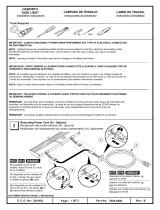 Haworth 7029-9488b Istruzioni per l'uso
Haworth 7029-9488b Istruzioni per l'uso
-
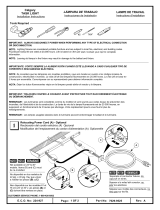 Haworth 7029-9525a Istruzioni per l'uso
Haworth 7029-9525a Istruzioni per l'uso
-
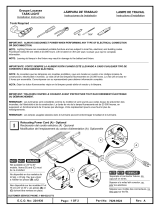 Haworth 7029-9524a Istruzioni per l'uso
Haworth 7029-9524a Istruzioni per l'uso
-
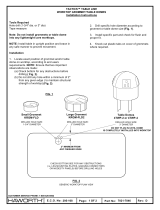 Haworth 7021-7046d Istruzioni per l'uso
Haworth 7021-7046d Istruzioni per l'uso
-
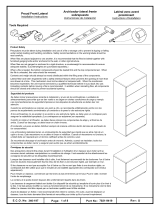 Haworth 7021-9419d Istruzioni per l'uso
Haworth 7021-9419d Istruzioni per l'uso
-
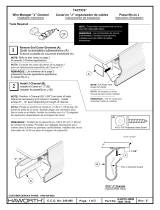 Haworth Tactics Wire Manager J Channel Istruzioni per l'uso
Haworth Tactics Wire Manager J Channel Istruzioni per l'uso
-
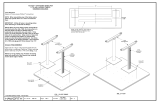 Haworth 7021-6984c Istruzioni per l'uso
Haworth 7021-6984c Istruzioni per l'uso
-
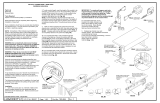 Haworth 7021-6986f Istruzioni per l'uso
Haworth 7021-6986f Istruzioni per l'uso
-
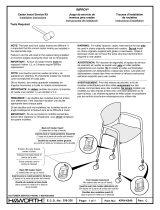 Haworth kp04-6049c Istruzioni per l'uso
Haworth kp04-6049c Istruzioni per l'uso
-
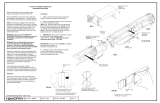 Haworth 7021-6997a Istruzioni per l'uso
Haworth 7021-6997a Istruzioni per l'uso



































































